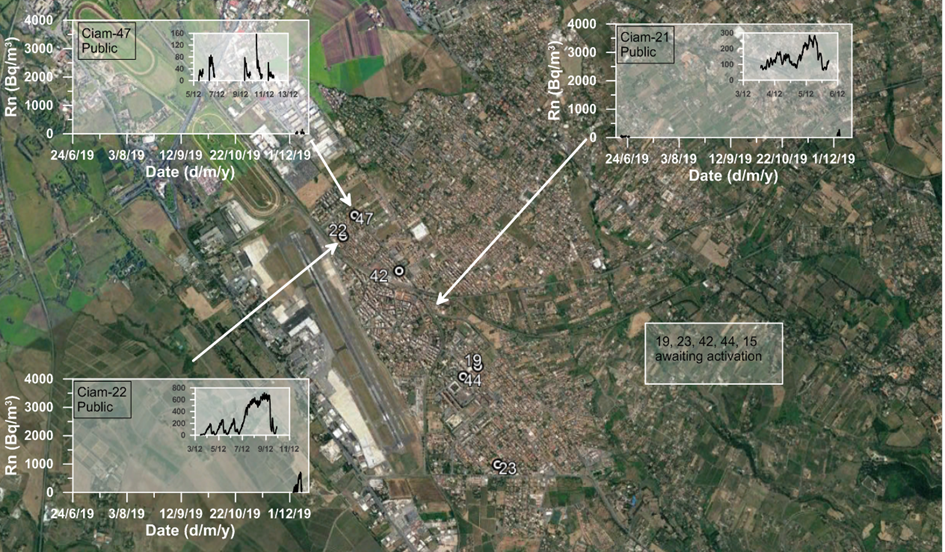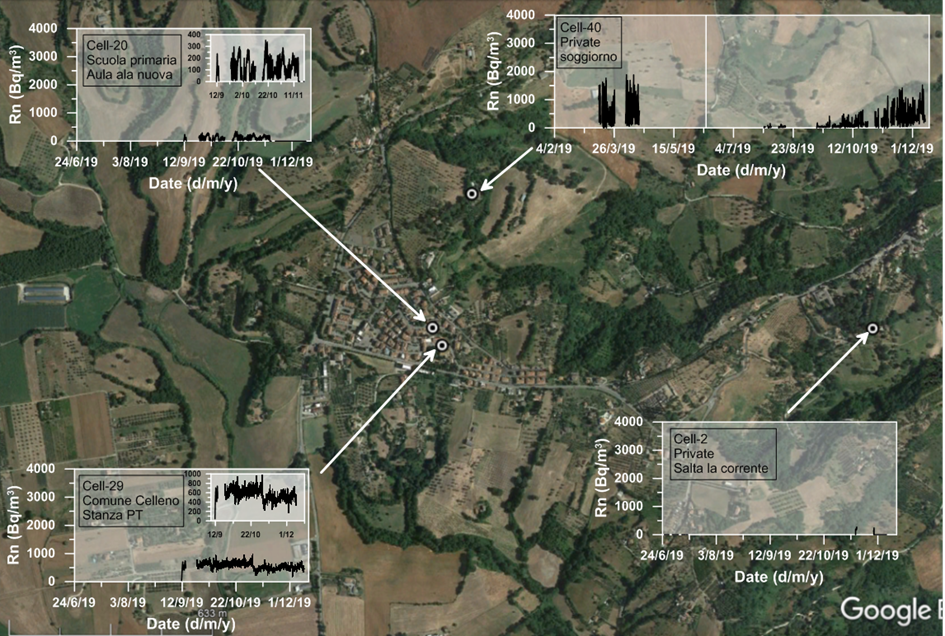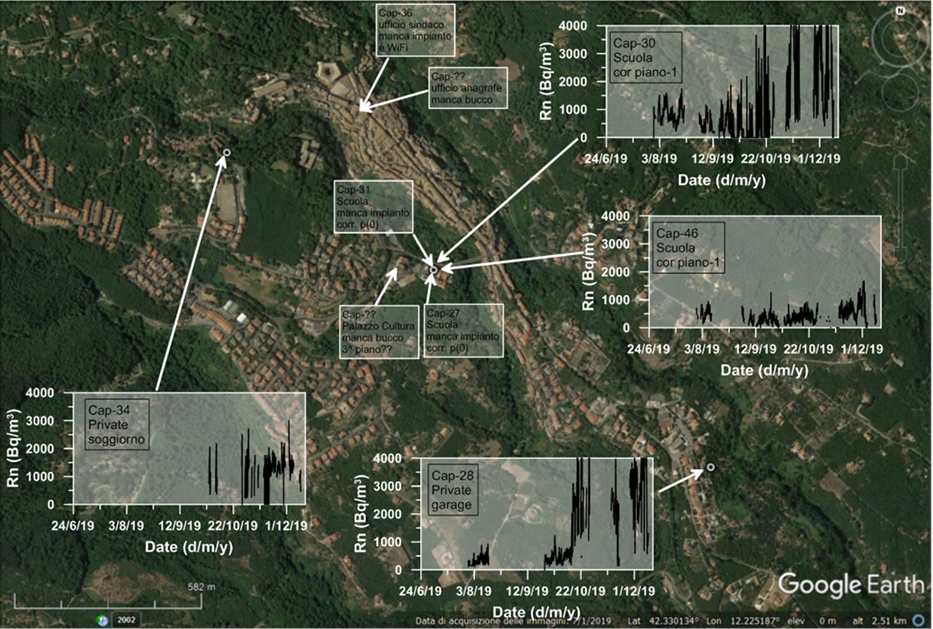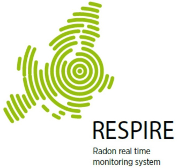Installation of SNAP prototype (Action B2)
The prototypes of RESPIRE radon remediation systems (including the ventilation unit SNAP, provided by Elica) in both private homes and public buildings (like schools and municipal offices) have been installed in the period between June and December 2019. Units were placed in each of the three studied Italian municipalities of Ciampino (8), Celleno (4), and Caprarola (7), which are quite different in terms of their population size, administrative operation, and (most important for the goals of the RESPIRE project) their average indoor radon concentrations due to the underlying geology and building materials used.
Ciampino is a community of about 40,000 inhabitants located approximately 13 km SE of the centre of Rome. Situated on the slopes of the Alban Hills volcanic complex, this city has been the subject of extensive geological study in the past due to the occurrence of strong emanations of geologically produced CO2 in densely populated areas. In addition to CO2, other surveys have highlighted locally elevated radon concentrations in the soil and in some buildings. This latter has been confirmed by the indoor measurements conducted within the LIFE-RESPIRE project (see Deliverable B2.2), which yielded a low geometric mean (65 Bq/m3) for the short term monitoring results but a higher geometric mean (259 Bq/m3) for the long term monitoring data collected during the winter period. That said, the Ciampino results were the lowest of the three Italian municipalities studied in LIFE-RESPIRE. Locations of all Ciampino sites and preliminary results from the 4 operating RESPIRE systems are shown in next figure.

Celleno is a small town of about 1,300 inhabitants located approximately 80 km NW of the centre of Rome. Situated on the slopes of the Vulsino volcanic complex, to the east of Bolseno Lake, this town is built on a spur of volcanic tuff outcrop that has been carved by river erosion. The indoor measurements conducted within the RESPIRE project (see Deliverable B2.2) yielded a high geometric mean (348 Bq/m3) for the short term monitoring results and a slightly higher geometric mean (386 Bq/m3) for the long term monitoring data collected during the winter period. Based on this latter result, 51% of the monitored Celleno buildings have long-term radon values above the European reference level. The Celleno results were intermediate of the three Italian municipalities studied in RESPIRE. Locations of all Celleno sites and preliminary results from the 4 operating RESPIRE systems are shown in next figure

Caprarola is a small city of about 5,300 inhabitants located approximately 50 km NW of the centre of Rome. Situated on the slopes of Monti Cimini, to the east of Vico Lake, this town is built on a spur of volcanic tuff outcrop that has been carved by river erosion. The indoor measurements conducted within the RESPIRE project (see Deliverable B2.2) yielded a high geometric mean for the short term monitoring results (405 Bq/m3) and an extremely high geometric mean for the long term monitoring data collected during the winter period (801 Bq/m3). Based on this latter result, 90% of the monitored Caprarola buildings have long-term radon values above the European reference level. The Caprarola results were the highest of the three Italian municipalities studied in RESPIRE.
Locations of all Caprarola sites and preliminary results from the 4 operating RESPIRE systems are shown in next figure. The main plots are shown in this figure with fixed axes (maximum radon sensor value for the Y-axis, main period of deployment at the various sites for the X-axis) to facilitate comparison with similar figures for the other municipalities, while the small inserts are plotted with scales chosen to highlight the range of values and monitoring period of the individual deployments.







